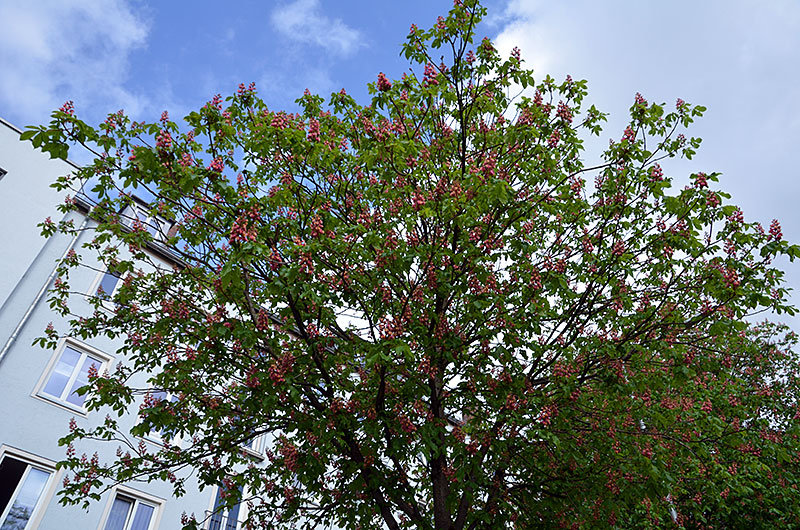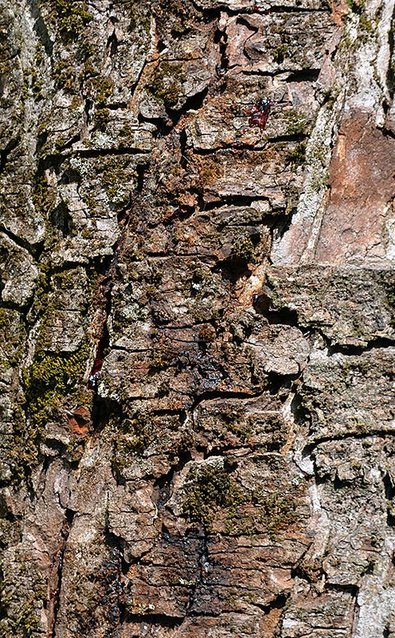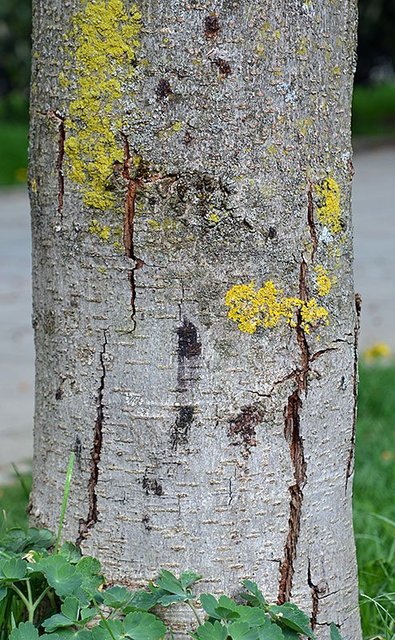The horse-chestnut (Aesculus hippocastanum) is home to the Balkan peninsula. Just since the beginning of the 18t century it has become a part of the central European flora and is a tree particularly characteristic of city green spaces. Until now only relatively few sicknesses occurred with this tree species. Noticeable are the leaf blotch disease (Guignardia aesculi ) as well as the hose-chestnut leaf miner (Cameraria ohridella). Both pathogens not only decrease yield but also cause an aesthetic depreciation of a widely cultivated park and garden tree.
Unfortunately not a flawless beauty
The horse-chestnut death is caused by the bacterium Pseudomonas syringae pv. aesculi –Pae for short. It was detected in India in 1969 and first observed in Europe in 2002 in the Netherlands. The first discovery in Germany was in 2007 (in Hamburg), now the bacterium is present in large parts of Central Europe. It is not known how Pae spreads from tree to tree, however, it is suspected to be spread by the wind.
The horse-chestnut death is classified as a complex disease. As a primary pest, Pae opens the door for subsequent infestations with wood destroying fungi. External symptoms on the white, and red flowering horse-chestnut are displayed as leaf damage but also as a localized bark necrosis. These favor a variety of other rot causing fungi as a secondary pest whose infestation can actually cause the death of the tree. On the contrary, other Aesculus species (e.g. A. pavia, A. flava) are infested much less.
Progression of the disease and symptoms
At the onset of infestation the horse-chestnut displays only very inconspicuous and unspecific symptoms. A transparent crown, small foliage and a lightening in the color of the leaves (Figure 1.) is noticeable after an infection. In the early part of the year a rust or black colored fluid (i.e. necrotic phloem) can be seen on the stems and is exuded from cracks in the bark (Figure 2). During periods of warm temperature a yellowish bacterial slime can occur and if one cuts into the bark a foam is produced. This is more common and noticeable with thin bark. The weeping spots dry out in the summer and remain easily visible as a blackish crust. In the further course of the disease the deceased bark ruptures due to the continued diameter growth and the cambium can be seen (Figure 3). Even parts of the crown will die.
Frequently, wood decomposing fungi such as the oyster mushroom, velvet-footed mushroom, violet cartilaginous mushroom or split-leaf fungus quickly follow an initial infestation. In the last phase of the sickness the fruiting bodies of the secondary pests occur primarily in the winter half of the year. At this time the white rot is already well established and the stability of the infested tree compartments cannot be guaranteed. Several years may pass between the first infestation by Pae and the appearance of the fruiting bodies, depending on the vitality of the tree and the aggressiveness of the wood destroying fungus species.
Infection through the horse-chestnut leaf miner?
It is still unknown whether there is a seasonal preference for the infection and how the propagation mechanisms of Pae work. A correlation between the bacterium and the chestnut leaf miner is not expected since the bacterium infests the white and red-flowered chestnuts equally and the chestnut leaf miner only infest white flowered horse-chestnuts.
Recommendations in the city
It seems that the best prevention is to increase the vitality of the horse-chestnut. In addition to a sufficient water supply, especially in periods of drought, a plentiful amount of nutrients and avoidance of stress (e.g. soil compaction or root injury) is necessary. Tree care measures should be held to a minimum.
As many horse-chestnut trees should be kept as possible, especially vital trees which can fend off local stem damage and revitalize itself. Mature trees can resist the pathogen much better than young trees which often die after a few years.
According to the current point of view, trees infested with the bacterium should only be felled when they become infested with a secondary pathogen and road safety is compromised. Subsequently the infested material should be transported in closed containers or covered up during transport and immediately incinerated or reliably composted (heating over 60°C is necessary). Chipping or shredding is to be avoided and the tools have to be disinfected.
It is not recommended to plant or replant horse-chestnut trees on sites with high stress in city green spaces. An example of suitable alternatives are the wild cherry or the sweet chestnut.
Eradication and perspective
Due to its endophytic lifestyle the bacterium cannot be kept in check through external measures. Currently, there are not any approved plant protection products available for eradication measures. Research has shown that a two day heat treatment at 39°C is sufficient to inactivate Pae where as the host plant is minimally affected. A practical application of this treatment is currently not on the market.
The disease is very serious even though there is evidence that a certain level of resistance in the natural horse-chestnut population exists. An increase in the distribution of the horse-chestnut death is to be expected in the coming years. As a result the horse-chestnut will become less frequent in the urban landscapes, in parks, beer gardens and roadside greenery.



